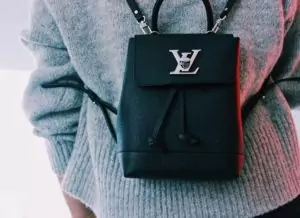Luxury brands were the last few to get into ecommerce. Their argument was that luxury is about experience. They couldn’t reconcile how to create online something as intimate as a customer’s visit to a Cartier boutique to find something deeply meaningful. I mention Cartier specifically as they were one of the early adopters of ecommerce. As someone passionate about the brand, I can attest my emotional experience during my first visit to the Place Vendôme boutique was nothing like my first visit to the website, where I spent hours making a wish list.
Where on the website, I could fantasize about how a Ballon Bleu would look on my wrist or a Panthere de Cartier necklace would grace my décolletage, being in the store made fantasizing and wishing unnecessary. As any skilled salesperson will tell you, the easiest sales happen when your customer wears the item. My purchase was immediate once I fell in love with the salesperson’s recommendation.
So how does this now happen in the digital age? How are luxury brands growing the loyalty of high net worth individuals?
Unable to continue ignoring its value, once defiant luxury brands have now embraced ecommerce, doing so with the help of two additional Es: emotion and experience.
The pursuit of luxury is a passionate endeavor. Emotions override all logical sense when a customer evaluates a Timex against a Patek Phillipe. Both tell time, but the Patek also makes the customer feel something very intimate, very personal. Brands understanding how emotions influence the pursuit make storytelling a priority in their site design.

A visit to the Louis Vuitton website can elicit excitement, romance, and of course, desire. They achieve this through frequently updated videos, which tell new stories with every visit. While luxury has always been defined by exclusivity, the LV site encourages a sense of inclusivity – possible, of course, only if you make a purchase. The videos persuade you into believing owning a Louis Vuitton item is entering a world of glamour and prestige. Your purchase gives you access to this exclusive world. For those who value that access, the money exchanged is well worth the price of admission.
Further into the site, you find product pages sharing in-depth stories, both visually and written, providing thorough details so customers can easily determine if the product meets their demands. If not, the site’s user experience is so engaging, customers can’t help but continue searching until they’ve found the right item.
Yet purchasing online is only possible for items under a certain price point. After a price, most luxury brands will insist on a personal interaction. This is how they’ve reconciled the in-person experience with the limitations of online.
When it comes to HNWIs, the URL will never defeat experiences offered IRL (In Real Life). To buy that $25,000 necklace or handbag, you’ll have to speak with someone, either by phone or by visiting a boutique. This takes the online experience offline and creates an intimacy that can’t be achieved by website alone.

